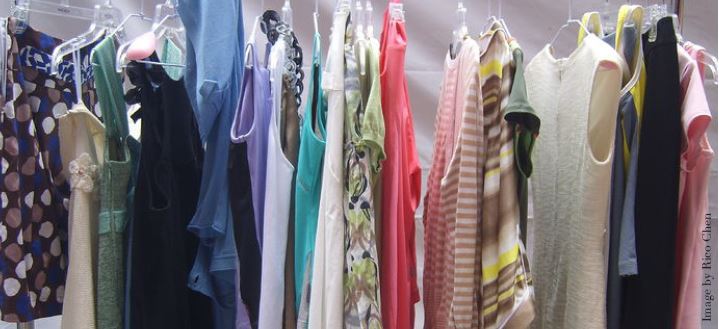A Closer Look in Your Closet
If I asked you to describe your closet, what adjectives would you use? Messy? Colourful? Large? What about your fashion habits? Do you save up for expensive purchases like Italian leather bags and hand-stitched dresses, or do you visit fashion chains like Primark and H&M on a regular basis, always on the hunt for a bargain?
If you’re like most Western consumers, your wardrobe is extensive but does not contain many high-quality, expensive products. You have lots of pieces that you wear two or three times before getting rid of them either because they go out of style within just a few weeks or fall apart after you wash them twice. Sound familiar? If so, you’re part of the fast fashion culture that dominates the global apparel industry.
Fast fashion is exactly what it sounds like: a rapid model of garment production and distribution that results in new trends and products being introduced in retail stores as often as fortnightly. This is a significant departure from fifty years ago, when fashion changes coincided with the four seasons, and people saved their money to buy quality products that would last them for years. Most fashion is no longer made to last, and consumers are prepared to make purchases more regularly.
Just as consumption habits have changed significantly, the nature of production has shifted. Most products are no longer made and sold in the same location. Now, fashion brands participate in global production systems in which suppliers in developing countries produce goods that are sold in retail stores in developed countries. Garment workers are paid meagre wages and often can’t afford to buy the clothes they make. They experience other challenges too, such as unsafe working conditions, long hours, wage and gender discrimination, and lack of benefits or employment rights.
Fast fashion practices put extra demands on workers, as tight timelines and cost pressures result in production practices that are detrimental to workers. Thousands of garment workers have lost their lives in factory fires and collapses over the past decade, tragedies which often go unreported by the media. In the fast fashion industry where “you get what you pay for,” it’s the workers who end up paying the ultimate price.
Here’s where you come in. Start to educate yourself on where the clothes in your closet are coming from and who is making them. Sources like Free2Work www.free2work.org/trends/apparel, The Good Shopping Guide www.thegoodshoppingguide.com/ethical-clothing-directory, and Ethical Consumer www.ethicalconsumer.org/buyersguides/clothing/clothesshops.aspx provide information on how to determine which fashion companies are “ethical.” Consider making a switch if necessary. Tell your favourite brands that you care about the conditions under which the clothes you wear are made, and that you’re willing to pay a couple extra bucks if they can guarantee workers in their supply chains are being paid fair wages. And maybe reconsider your shopping habits. Sometimes less is more. You, as a consumer, have a voice, and perhaps the meaningful way it can be expressed is through your wallet.
This throwback thursday article written by Anna Rohwer was originally published in Artmuso in August 2014
artmusoadmin
Latest posts by artmusoadmin (see all)
- 12 Reasons Not To Vote For Boris Johnson - December 7, 2019
- The Problem With Democracy - October 17, 2019
- Lauryn Hill Review Manchester Arena - December 1, 2018

